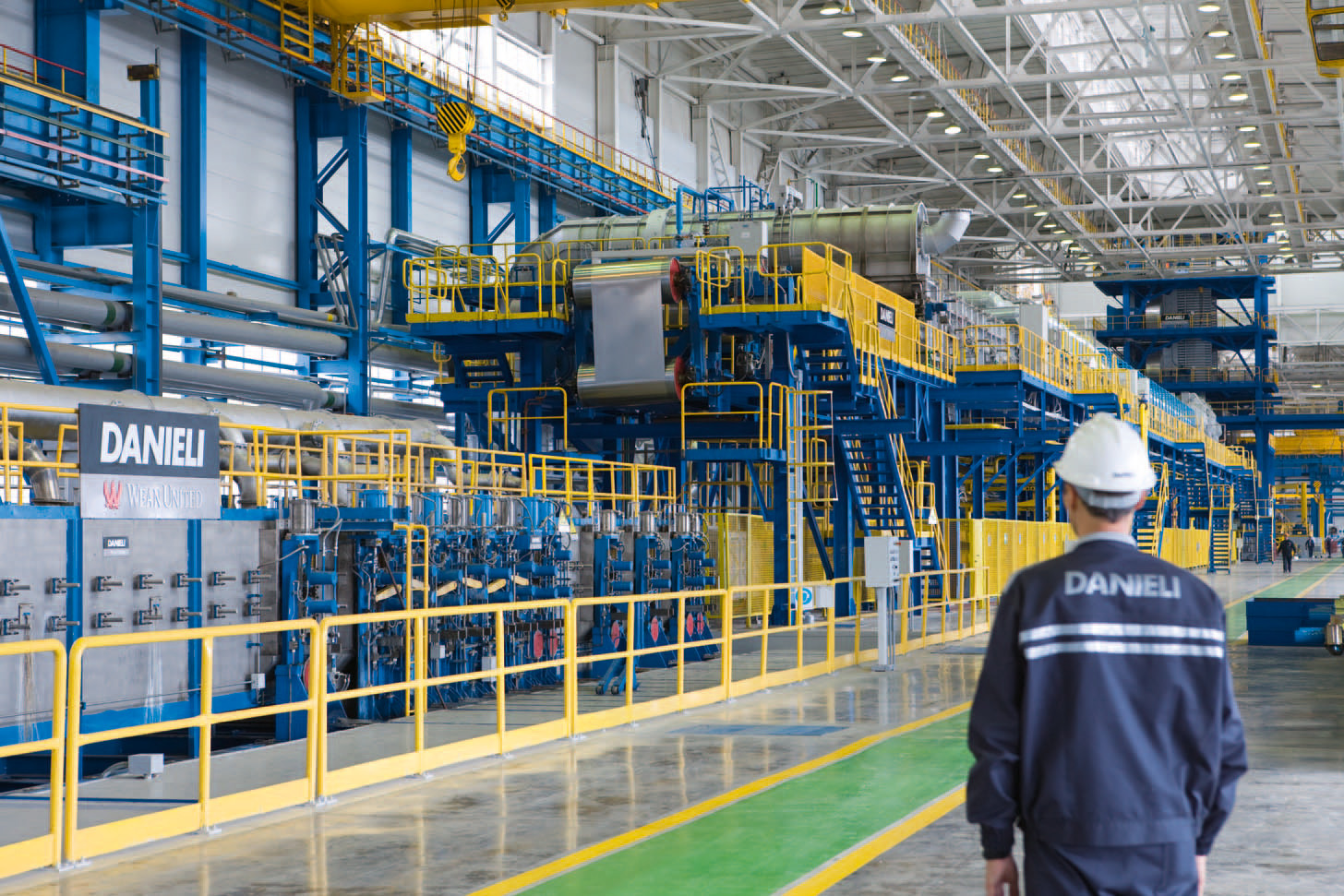Italian metals engineering major Danieli is optimistic about its growth prospects in India, with the ongoing consolidation in the steel sector and new opportunities emerging in rail transport. Danieli set up a machinery equipment and spare parts making plant at Sri City, Andhra Pradesh in 2014–15, producing about #20–25 million worth of goods a year.
Danieli India Ltd CEO Francesco Esposito tells “Steel Inside” that, in India, Danieli supplies machinery and technology to steel and aluminium producers.
What products do you offer for the Indian steel market?
We are present in all the verticals, including long and flat products. We are also into supplies of project equipment, automation projects and engineering software projects for steel plants. We are not only involved in supplying of technology for new plants but also into improving old plants and machinery, electrical optimisation of furnaces, fuel extraction convertors and provide technology packages for galvanizing lines. We provide various technology packages for optimisation of cost for big steel mills of JSPL, JSW and Tata Steel.
We also have capabilities for providing our expertise for making of modern day rails and wagons.
Which segment contributes most of the revenues for Danieli in India?
Steel contributes to 85–90 percent of the revenues in India. We started our plant in Sri City in 2014 and have seen the worst years in the steel industry in 2015 and 2016. About 60 percent of the revenues then came from domestic projects and rest came from foreign projects. Spare parts refurbishment process helped us tide over the period when projects were slowing during the worst years of the steel industry.
Now we are offering complete end-to- end solution for our clients, including new mills, hydraulic parts and complete after sales service.
What has been the growth of Danieli like in India considering many plants were under NCLT and in consolidation mode?
The consolidation process has strengthened the requirement for producing quality steel. We have invested €65 million to set up our plant in Sri City. In the last 3 years we have doubled our organisation. We are optimistic about the steel sector, though several projects got delayed in the past. Demand projections are strong and the consolidation will help in revival.
However, we exercise caution about the future. We do business of about €200 million in India. Imports will be to the tune of about €100 million, while another €100 million worth of project equipment is produced by us or outsourced locally in India to execute our projects here. The company also forayed into service contracts for managing some of the non- core operations of steel companies, in order to overcome the slowdown in execution of new steel capacities in India.
Danieli also sees opportunities in the transport space, especially in railways, for aluminium coaches and high-speed trains. The company is fully geared to supply technology on a turnkey basis to execute such manufacturing facilities in India. We are looking at €400 million business by 2021 from India.
India is targeting 300 mt of production by 2030. Do you think scrap-based plants would be the main growth drivers?
It took 40 years for India to reach a production level of 100 million tons. It will be a difficult task to reach another 200 million tons in only 10 years. But we are optimistic that India can reach a level of another 150 mt at best.
India does not have enough scrap generation from within the country and is dependent on imports.
Unless there is a comprehensive policy of scrap generation and end-of-life vehicle policy, depending on only the scrap route for steel making would be a difficult
proposition. India has a lot of small iron ore mines scattered in different parts of the country.
These mines have enough iron ore to operate a mini-blast furnace of 450,000- 500,000 tons. These mini-blast furnaces can produce enough steel which can meet the demand within the periphery of 500- 600 km.
Is Danieli involved with any such project in India?
We are currently offering our solutions for 3 such projects in southern India and hope that more such projects come up in Eastern and other parts of the country as well.
You mentioned Danieli is present in all product verticals of steel, including long and flat.
Which product vertical is offering better growth prospects?
Currently, long and flat products make up around 50:50 part of our service offerings in India. However, traditionally we are strong in long products.
What do you think are the main problem areas for steel-makers in India?
In India, projects are not difficult. The problem lies with execution of the projects. Execution of projects take too long a time and it leads to cost overruns. This ultimately impacts financing of projects in the long run.
We are offering end-to-end solutions to not only increase product categories but also to increase efficiency levels through faster execution of projects.
© “Steel Insights”, May 2018
